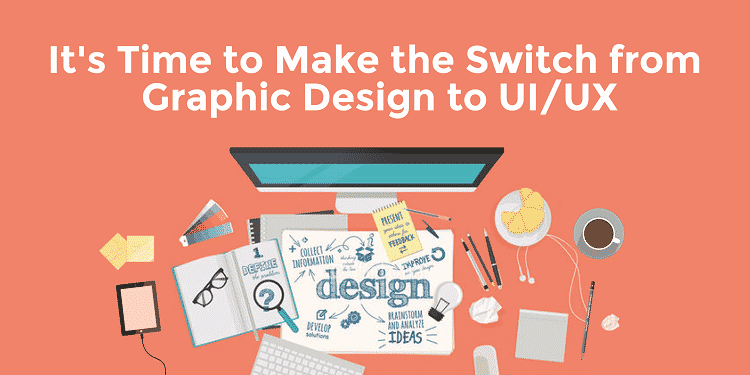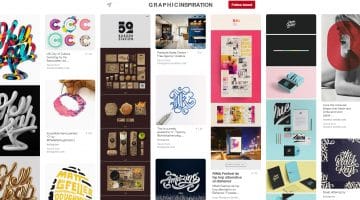Before you can make a transition from a graphic designer to a UI/UX designer, you need to understand the differences in both roles. The role of a graphic designer is to create stunning aesthetics which deal with the visual aspects only. The role of a UI/UX designer is not only concerned with the visual aspect but also with the overall user experience. It includes the overall design architecture, user interface, and how to be more presentable.
The responsibility of a graphic designer is to create captivating visuals whereas the responsibility of a UI/UX designer is to create a captivating product. It involves the entire design process starting from user research, analysis, design, prototyping and user testing. It is only the design part where a graphic designer will come in handy. Therefore, it is clear that the scope of a UI/UX designer is huge and so is the pay. The followings are the top 5 steps you need to take to make a tradition from a graphic designer to a UI/UX designer.
- Learning New Skills – There is a wide gap between the skills of a graphic designer and that of a UI/UX designer. Therefore, the step to make the transition is to bridge this gap. There are so many online courses available which you can enroll to acquire all the skills you need to be a UI/UX designer. Then you need to be confident enough by analyzing the already made product and how the UI/UX designers have gone about the product.Once you feel like you have all the skills and tools to create something similar for any product you come across, you can leave the job of a graphic designer and apply for the UI/UX designer job. Some of the popular online course learning platforms are Coursera and Udemy. Apart from that, there are YouTube videos and blogs to read. Some of the skills you need to have are human psychology, user research techniques, the visual design which you might already have, and interactive design along with the knowledge for information architecture design.
- Change In Designing Approach – When you make a transition from a graphic designer to a UI/UX designer, you have to take a leap in your designing approach. A graphic designer is found on pixel-focused design whereas as a UI/UX designer, you need to pursue user-focused design. It is needless to say that the color should be according to the brand color and appealing. The font and color combination has to be good but these are very little things when you take a UI/UX designer’s perspective. The main focus of your design has to be whether your design will make things easy for the users or not. You have to focus more on the usability of the design rather than heavily on the aesthetics. Along with usability, the functionality of the design is also to be kept in mind as you will be working directly with the developer. The aesthetics will be the second priority and the first priority will go to how the design will be effective for the users.
- Conducting User Research – You can only be a good UI/UX designer when you can understand the mind of the users and you can conduct and analyze user research like a pro. In fact, it is the most difficult part for a UI/UX designer. You need to have an idea of human psychology, you should analysis any product and dissect its user interface and the thought process that went develop its development and point out the good and bad points. Moreover, you need to get a grip on the behavioral and attitudinal aspect of user research and survey. Always show your work and be open to suggestions and criticisms. Only then can you improve and be a great UI.UX designer with experience.
- Create A Portfolio – It is safe to assume that you are working as a graphics designer either part-time, full-time or as a freelancer. However, you have no experience in UI/UX design and therefore, getting a job will be difficult and your present career as a graphic design can have a negative effect. Therefore, you have to start from the scratch and create a stunning UX design portfolio. Start participating in different UI challenges online and start working as a freelancer in the role of UI/UX design. This will increase your confidence and help in creating the portfolio that you can show off.
- Join UI/UX Communities – Since you are new to UI/UX designing, you are sure to have a lot of questions and you also need some guidance in real life. If you can take help of the UI/UX designer in your organization, it would be best but in most cases, that will not be possible. You can check Facebook groups, LinkedIn, Medium, and various other online community sites to get professional help. In fact, you can ask how to build the portfolio, where to get a job on UI/UX design, what tools and technologies to use, the trends in UI/UX designing world ad much more. This is also referred to as networking.




